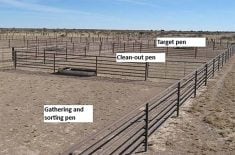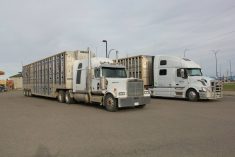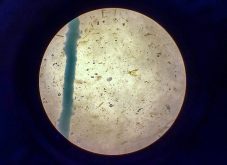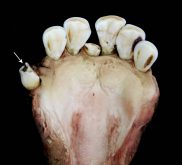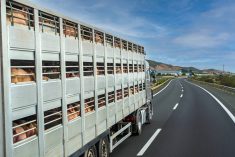SASKATOON — Animal welfare in Canadian feedlots has steadily improved over the years, but castration of incoming bulls remains an issue.
Dr. Kee Jim, veterinarian and founding partner of Feedlot Health Management Services, said some feedlots will not accept bulls because of the time, effort and associated costs of castration.
Jim told the International Symposium on Beef Welfare June 6 that castrating older bulls is hard to defend, even with the use of painkillers and anesthesia.
“It’s questionable in my mind whether that is going to survive here in North America,” he said about castrating bulls in feedlots.
Read Also

Charges laid after cattle theft
Saskatchewan RCMP lay two charges against a man after six cattle went missing.
“The market signals aren’t doing it because the discount for the intact bull is not enough to get the rest … on the right page. If the discounts were steeper, then people would abandon the practice.”
Jim estimated that 10 to 15 percent of cattle arrive at feedlots as intact males. With no reasonable way to manage bulls, feedlot operators castrate the animals even if their age and weight are not desirable from a health perspective.
Anesthetics are sometimes used but that is not consistent across the industry.
“Proactively, the beef industry could deal with the issue by simply volunteering … to regulation on age of animals that can be castrated. If we did that, we wouldn’t really have to worry about it at the feedlot level,” he said.
Animals that have one testicle because of an incomplete castration, usually due to banding, should be handled outside the usual feedlot production system, he added.
Jim said feedlots no longer brand or dehorn cattle. Branding is unnecessary in animals confined to a feedlot, while dehorning is not worth the health setbacks that can occur.
As well, Jim said the feedlot industry has dramatically reduced its use of electric prods.
“In many situations, the improvements in welfare occurred because they were consistent with improvements in productivity and improvements in profitability.”
Jim said cattle welfare has improved since the birth of Western Canada’s feedlot industry in the late 1970s.
Calves are seldom brought to feedlots directly after weaning, which causes stress and related health problems.
As well, Jim said veterinarians and nutritionists are now part of a feedlot’s management routine.
He listed five major categories of animal welfare improvement:
- physical infrastructure
- health management
- nutrition
- consideration for welfare
- better training of feedlot personnel
Improved equipment for feeding, bedding, wind protection and drainage has also contributed to better conditions, he said.
“The other thing that’s been good to see over the years is that there is a consideration for reducing animal suffering by feedlot owners and managers.”
Jim said he does not believe the beef cattle industry faces a crisis because of criticism of its animal health practices.
For example, he said the number of vegans hasn’t increased, and export markets are the future for expansion.
“I believe that the beef industry is capable of reacting and changing whatever society dictates that we have to do,” he said.





